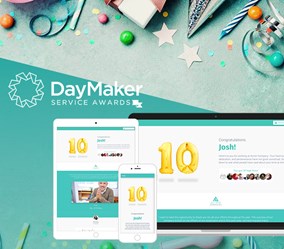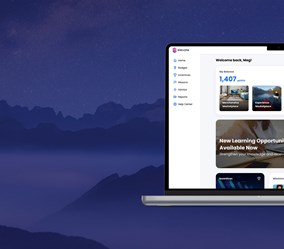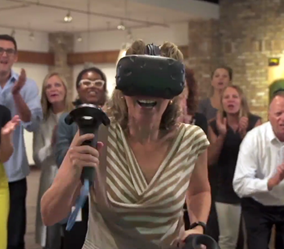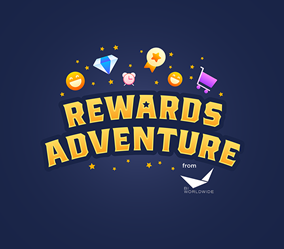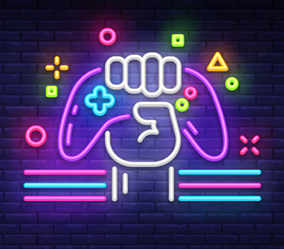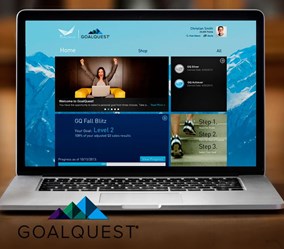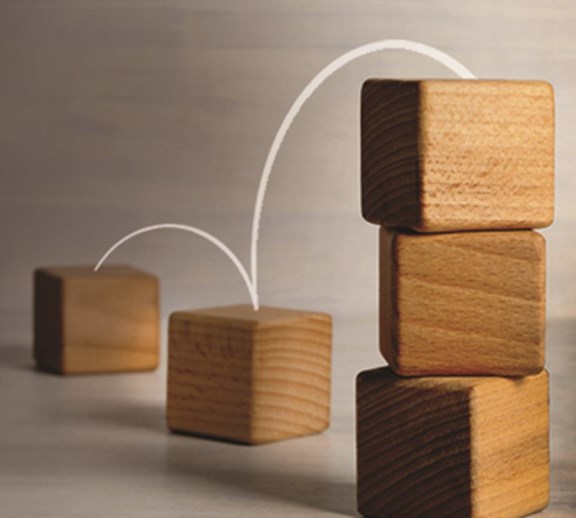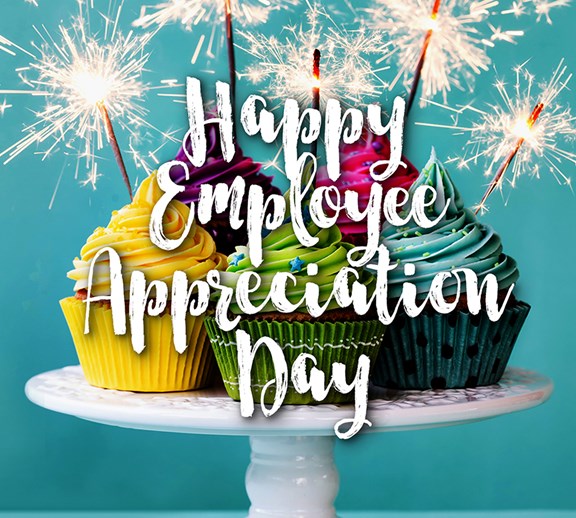6 Ways to Modernize Employee Rewards and Recognition
An employee rewards and recognition program has the power to motivate and inspire and at the heart of every rewards program is a very simple premise. If you do X, you will get Y.
Scroll Down
Every time one of us succeeds at something — anything — our nerve cells release a chemical called dopamine, which stimulates the reward centre of our brain. It feels good! When you recognize a peer, it produces a double-dopamine rush: doing the behaviour feels great — and being recognized for it does, too.
The Modern Workplace: Millennials are taking over
The Millennial generation currently makes up more than half of the Canadian workforce. By 2025, that number will reach 75 percent. This generation is unique and presents unique challenges for top employers to inspire and retain them. Millennials make up the social generation that lives for instant feedback and communication in their personal lives. Now they want it at work. Constant feedback, clear communication, and collaborative work environments are key engagement drivers for this group.
1. Challenge the Status Quo
One of the ways to modernize employee rewards and recognition is to create a recognition program that defies the status quo, building a culture of recognition for every level of your organization. One that disrupts the norm, grabs employee attention and engages them long-term. This includes revitalizing and re-engaging your audience with a new program, new interaction, new rewards, and new ways to earn.
Ending one thing and starting another thing right away fosters an easy comparison. Many sponsors of, for example, cash programs, think that if they take away X, they can replace it with something equivalent to X and everybody will be happy. Wrong: we value losses more than we value equal-sized gains. Employees who are told, “We’re ending Program X and replacing it with Program Y. It’s the same value to you, but we’ll use points instead of cash,” will think that they’re getting the shaft. “There’s no way the new program could be better,” they’ll chat at the water cooler.
Avoid replicating the earning opportunities, measures, or rewards that were common in the current program with the new program. Do something different so that the new program is not so easily compared to the old program. Make the new program a platform for a new message, a new way of looking at life at your enterprise, new branding, and a new focus. Don’t simply carry over the old into the new and expect people to accept it as new, especially when it really isn’t.
2. Don’t Just Target Top Performers: Adopt a “Move the Middle” Approach
According to behavioural economics professors Dr. Ran Kivetz and Dr. Itamar Simonson, a major reason individuals choose which incentive or loyalty program to join is based on whether or not they identify an idiosyncratic fit. Idiosyncratic fit is the feeling that you enjoy a unique advantage in achieving a goal, making a sale, beating an opponent, or completing a task. If you are a sales executive, this is a secret weapon you need to know how to use. Every time a salesperson on your team is offered a new incentive or opportunity, they ask themselves two questions to determine if the opportunity “fits” them:
- Do I believe I have an advantage over others in the program?
- Are the rewards worth the effort?
When individual members of your team answer yes to these two questions they are most likely to join and succeed, in a specific program. In fact, when you give sales reps the opportunity to choose their own goal, 98 percent will do so and 42 percent will aim for the highest one. Convert unproductive behaviours to productive ones using the two questions above, you will move your middle performers in the right direction in as little as two months.
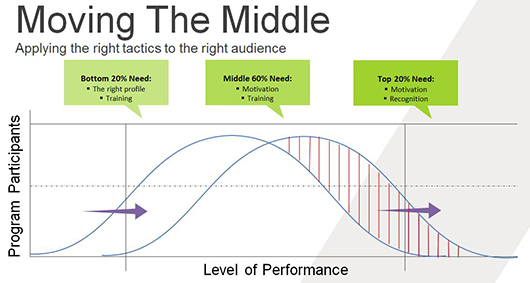
Failure to find this idiosyncratic fit results in reduced confidence and lack of engagement by your sales team. Managers who celebrate and reward only top performers will find themselves frustrated in their efforts and wondering why they aren’t hitting their goals.
Companies that provide performance-based rewards to multiple segments of their sales force enjoy better employee engagement and sales volume.
3. Diversify Your Rewards Portfolio
To bring the investment portfolio down to a personal level, let’s compare your sales comp plan to the way you invest (or spend) your own personal income. To begin with, salary and benefits are similar to long-term investments like real-estate, bonds, and insurance in your own personal portfolio. Continuing the comparison to other ways of investing (or spending) your income is easy.
Commissions and cash spiffs are the gas and groceries of your comp plan, which leaves non-cash incentives and recognition as the emotional and social part of your own personal spending, analogous to the money that goes to entertainment and special occasions. Although these may not be a huge part of your sales comp (or individual) budget, results show they can be powerful motivators when used wisely.
Each of these is part of a healthy comp plan. But what is the right blend? If rewarding more of your sales force is important, should you have different incentive tools available? To explore this issue, we asked 575 sales compensation experts:
What method(s) of rewards do you use for incentives? (Check all that apply.)
- Cash
- Gift cards
- Travel
- Non-Cash/Non-Travel
The results are telling. Companies who use more of the incentives listed above have a positive relationship with the business outcomes on which our panellists reported:
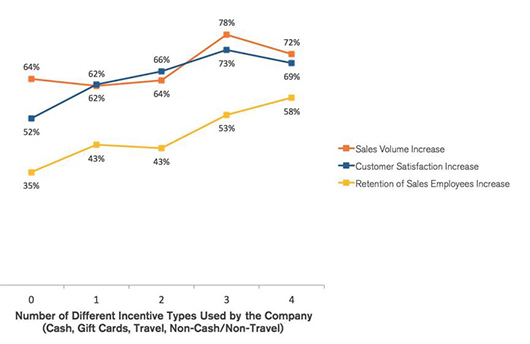
To most effectively engage the entire sales organization, different types of incentives can be used. Travel, which is a comparatively more expensive option, can be used to reward top performers. Gift cards or non-cash items, which are less expensive, can be used for incentives where more salespersons earn based on achieving, for example, a shorter-term sales contest.
One executive in the automotive industry concludes: “I think employees who have smaller goals in a short period of time ARE more successful than long-term goals that require more time.” The field of positive psychology informs of a phenomenon called “hedonic adaptation,” where something that initially makes us happy and engages us becomes dull and trite after a time. We would argue that companies who employ various tools reduce the impact of hedonic adaptation. More simply stated: when it comes to incentives, it’s good to mix it up.
4. Reward Choice
The most effective reward and recognition programs allow employees to choose their own award. Personalized and segmented offerings and communication make people feel like the opportunity being presented to them is unique.
Not all rewards are equal. To make your investment pay off, you also need efficacy.
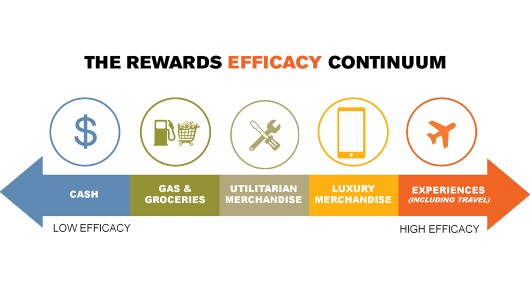
For example, the cash end of the continuum is more quantitative and financial in nature. It puts people into a calculative mode and the reward begs the question, “Is this a good deal?” Because of this, cash is less effective at getting results. Whereas travel or tickets to a show or luxury merchandise are more emotional in nature and the question becomes, “Do I want it?” The farther away from the dollar sign, the more effective the rewards become at changing behaviour.
These types of incentives can be used to focus a sales organization on a variety of outcomes. Execution is critical. Participants report a number of corporate challenges, which could hinder incentive effectiveness. Of particular concern is effective communication and supervisor engagement.
Experiences
A study by Harris Group found that 72 percent of millennials prefer to spend more money on experiences than on material things. According to Dr. Elizabeth Dunn, Professor of Psychology at the University of British Columbia (UBC), experiences—as fleeting as they may be—deliver more-lasting happiness than material things. Dr. Dunn attributes the temporary happiness achieved by buying things to what she calls “puddles of pleasure”.
In other words, that kind of happiness evaporates quickly and leaves us wanting more. Things may last longer than experiences, but the memories that linger are what matter most.
By offering up experiences or experiential rewards to your employees, you're creating a reward that your employee will talk about back in the office, re-live time and time again, and will instill some serious Fear of Missing Out (FOMO) when they post pictures of where they've been.
5. Immersive Reward Technology
For many incentive programs, print catalogues led the way more than a decade ago. Now, as technology has evolved, eCommerce rewards systems are taking precedence. Web-based rewards catalogues should feature a curated, international offering of products aimed at motivating and inspiring your audience.
Further, as technology evolves, digital experiences are becoming more sophisticated. Virtual reality (VR) technology is being used within the rewards marketplace to give top performers the opportunity to run through a virtual warehouse and “grab” as much sought-after luxury merchandise as possible in a thrilling virtual world, all from whatever location they choose.
There's no better way to recognize your employees than with an immersive, portable, flexible, and outrageously cool opportunity to run through a virtual warehouse filled with everything they could ever want (and absolutely nothing they "need").
6. Invest in Social, Mobile-Friendly Technology
The best way to modernize an employee rewards and recognition program is through the incorporation of social media. A social recognition platform:
- Reinforces outstanding performance through social connectivity,
- Puts employees into the public eye,
- Enriches the organization’s culture as a whole,
- Allows for peer feedback, emphasizes the accomplishments of employees.
Just take a look at all the “likes” on social media, and you’ll realize just how much the social generation craves recognition from their peers.
We think it’s important to communicate, encourage, and reward your young, talented employees more often and in “real-time.” As opposed to waiting for an annual review, new social recognition technology allows you to recognize and reward behaviours as they happen and delivers that positive reinforcement at a time when it will be most immediate and impactful.
To learn more about how BI WORLDWIDE Canada can help motivate your employees with an employee rewards and recognition program, contact us at: canada@BIWORLDWIDE.com
Inspire with employee rewards and recognition
Start rewarding your employees today.


